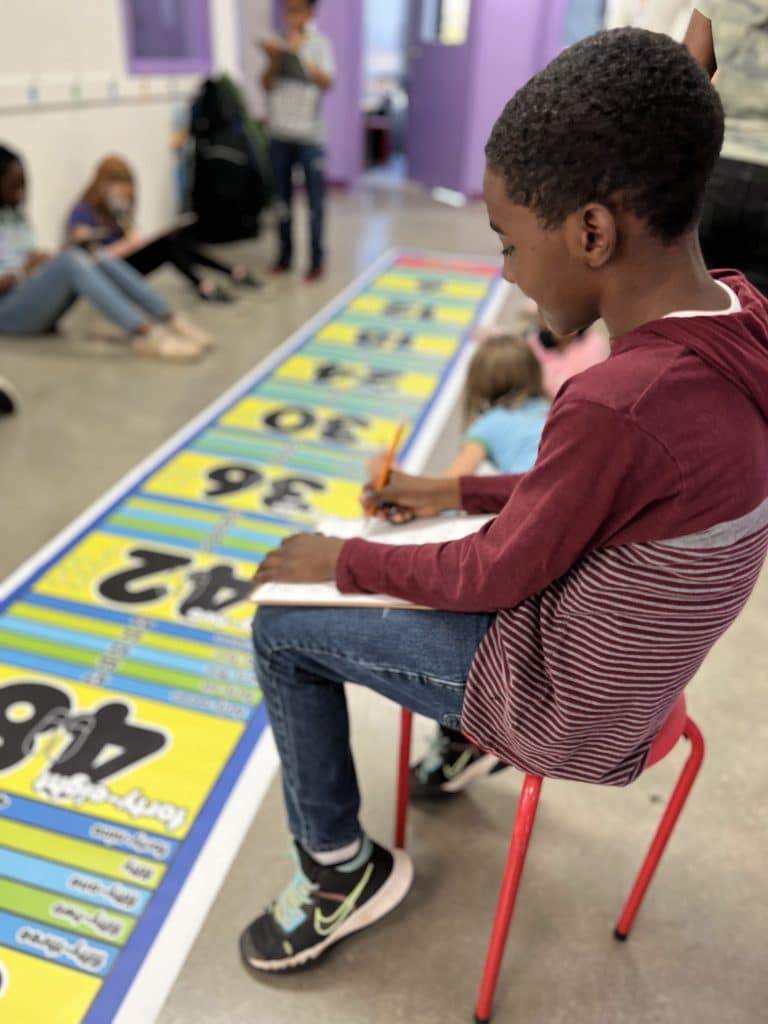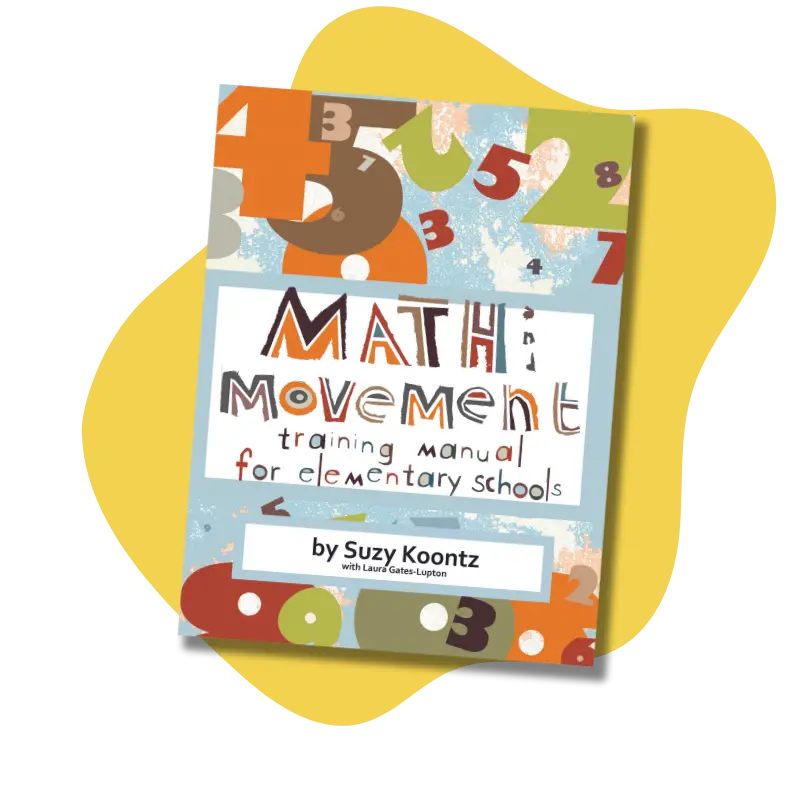Short but Powerful Math & Movement Lesson on Multiplying by 6s

-
Washington Yu Ying Charter School
Public Charter School
Washington, D.C.
-
Fourth Grade
Classroom Study
-
Pre and Post-Tests
Program Evaluation Tools
-
40 mins during an after-school program
Program Timeline
Study Focus: The effectiveness of kinesthetic teaching methods for multiplication by 6s in an after-school program
In October 2022, Math & Movement Founder and CEO Suzy Koontz led a 40-minute math intervention for 10 fourth grade students in an after-school program. These students attended Washington Yu Ying Public Charter School. The school offers dual English and Chinese language cultural immersion, in which students receive equal instruction in Chinese and English in all subjects.
Students completed both a pre-test and a post-test with 30 multiplication by 6s problems.
Before starting the intervention, the students completed the pre-test so that Suzy could gauge their fluency with multiplication by 6s. Also, a verbal pre-test was completed by having the students collectively skip count by 6s. Students counted from 1 to 60, whispering the numbers that are not multiples of 6, and shouting the multiples of 6.
Suzy began the intervention by leading students in active math movements as a warm-up. Students participated in the “Soccer for 6s” movement, which goes as follows:
- Kick your left leg across to the right. Whisper, “one.”
- Kick your right leg across to the left. Whisper, “two.”
- Cross your left knee to the right. Whisper, “three.”
- Cross your right knee to the left. Whisper, “four.”
- Head the ball. Whisper, “five.”
- Jump, clap, and shout, “SIX!”
- Continue this pattern to 60.
Next, the students lined up the Skip Counting by 6s floor mat. Each student jumped on the mat while their peers stood on the sidelines and chanted the multiples of 6 in sync with their jumping.
After each student had a turn on the mat, Suzy had the students turn away from the mat and skip count by 6s aloud without looking at the mat.
Understanding that the students had made progress but still required some additional progress, Suzy asked the students if anyone wanted to have a second turn jumping on the mat. Their hands shot up!
The group continued taking turns jumping on the mat and collectively skip counting by 6s aloud. Periodically, Suzy gauged their improvement by asking the students to face away from the mat and skip count aloud.
Finally, Suzy demonstrated how to solve multiplication by 6s problems by using the mat and counting their jumps. Students received a page of multiplication by 6s problems and were encouraged to use the mat to find their answers. Students worked independently, jumping on the mat to count the groups of 6s and documenting their answers on their worksheets.
Their post-test scores showed just how much the Math & Movement intervention helped them learn!
"One student wanted to share his math experience with me. He said, 'I have had such a hard time with times.' He is not alone," Suzy Koontz shared. "At the end of the program, this student stated with confidence, 'Now I know how to do times.' The evidence proved how he was feeling - there was a five-fold increase between this student's pre-test score and post-test score!"
Challenges
-
The study was conducted after school. Students are often tired and restless, which can affect their focus and motivation.
-
At the beginning of the study, students were only scoring an average of 29% on multiplication by 6s. This raised significant concerns.
Solution
Results
-
After only 40 minutes of participating in activities using the Skip Counting by 6s mat, students increased by an average of 28% from their pre-test scores to their post-test scores.
-
Nine out of the ten students improved their post-test score by at least 20 points from their pre-test score.
-
All of the students increased their post-test scores from their pre-test scores.
-
The students were highly engaged during the intervention. They were very excited to jump on the Skip Counting by 6s mat. Even with this energy and enthusiasm, they were cooperative and made great academic progress.
-
On average, students' post-test scores were over two times higher than their pre-test scores.
-
Students made an impressive 97% improvement in their post-test scores from their pre-test scores in a very short amount of time using Math & Movement.
"I asked the students what I believe is the most important question: 'Did you personally improve?' It is imperative that students recognize that their own hard work makes a difference in their learning. When they put effort into practicing and learning, results happen. They improve their skills. The students answered that they had grown in skip counting!"



